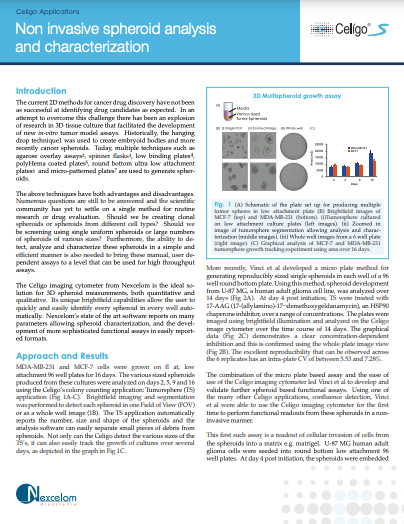Non-invasive spheroid analysis and characterization
The current 2D methods for cancer drug discovery have not been as successful at identifying drug candidates as expected. In an attempt to overcome this challenge there has been an explosion of research in 3D tissue culture that facilitated the development
of new in-vitro tumor model assays. Historically, the hanging drop technique1 was used to create embryoid bodies and more recently cancer spheroids. Today, multiple techniques such as agarose overlay assays, spinner flasks, low binding plates, polyHema coated plates, round bottom ultra low attachment plates and micro-patterned plates are used to generate spheroids.
The above techniques have both advantages and disadvantages. Numerous questions are still to be answered and the scientific community has yet to settle on a single method for routine research or drug evaluation. Should we be creating clonal spheroids or spheroids from different cell types? Should we be screening using single uniform spheroids or large numbers of spheroids of various sizes? Furthermore, the ability to detect, analyze and characterize these spheroids in a simple and efficient manner is also needed to bring these manual, user-dependent assays to a level that can be used for high throughput assays.
The Celigo imaging cytometer from Nexcelom is the ideal solution for 3D spheroid measurements, both quantitative and qualitative. Its unique brightfield capabilities allow the user to quickly and easily identify every spheroid in every well automatically. Nexcelom’s state-of-the-art software reports on many parameters allowing spheroid characterization, and the development of more sophisticated functional assays in easily reported formats.

